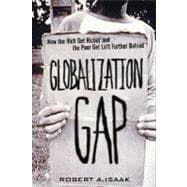
| About the Author | |
| Preface | |
| Introduction | |
| The Revolt of the Rich | |
| Time versus Opportunity | |
| The Rich: Who They are and How They Work and Why They Speed Things Up | |
| Who the Rich Are and How They Live | |
| Big, First, and Well Positioned | |
| Bigger Houses with Fewer People in Them | |
| Education Equals Savings and Investment | |
| The Truly Rich Are Really Thrifty | |
| Harried Leisure and Time Deprivation | |
| Pyramids of Opportunity | |
| Corporate Wealth and Hedging | |
| The Global Speed Trap: Diversifying to Ward off Losses and Old Age | |
| How the Global Economy Is Speeding Up | |
| Attention Deficit Disorder: Metaphor for Cultural Disintegration? The Graying of the Rich: From Baby Boom to Bust | |
| The Poor: Who They Are, How They Live, And Why They Are Dependent | |
| Why the Poor Are Where They Are | |
| Income Inequality | |
| Is the World's Middle Class Disappearing? Asset Inequalities | |
| Democratic Deficits versus Too Much Democracy | |
| A Passage Through India | |
| Emerging Modernity | |
| Reinforcing Poverty through Religion and Cultural Traditions | |
| "Indian Time," Caste, and Aesthetic Design Confront Globalization | |
| High-Tech Bangalore and the Time Warp | |
| Poverty Traps | |
| The Institutional Trap | |
| The Trade Trap | |
| The Educational Trap, the Gender Gap, and the Digital Divide | |
| The Debt Trap | |
| Cultural Traps and Governability | |
| Property Laws, Legal Traps, Limited Markets | |
| The Rules | |
| Origins of the Rules of Globalization | |
| Protecting Comparative Advantage: Making the Most of What You've Got | |
| The "Fixing" of Exchange Rates | |
| Oil Cartels and Petro-Dollars | |
| Democratizing Investment Banking | |
| Trade Rules | |
| From Scarcity to Ubiquity: Digitization and the Falling Cost of Information | |
| How the Rules Rule the Poor | |
| How Free Capital Flows Can Create the Poor | |
| The Competitiveness Mantra: Consolidate, Raise Productivity, Downsize, Outsource | |
| Crisis and Solutions | |
| Global Crises We Will All Face | |
| Too Many People in the Wrong Places | |
| The Spread of Plagues and Epidemic Diseases | |
| The Rapid Global Spread of Unemployment and Underemployment | |
| The Education Crisis: Elite Hierarchies Confront Desperate Demands for Tools and Open Access | |
| From Corporate Oligarchy to Chaos | |
| The Environmental Crisis | |
| American Unilateralism: Taxation Without Representation? Proliferation of Nuclear, Chemical, and Biological Weapons | |
| A Blueprint for Sharing Opportunity | |
| Keeping the Promise of Democratic Capitalism: Open Opportunity | |
| Why It Benefits the Richest of the Rich to Help the Poorest of the Poor | |
| Building High-Tech, Sustainable Communities | |
| Ten Steps for Replicating Sustainable Silicon Valleys | |
| Attracting Venture Capital: A Transparent NGO with a Nonbusiness Service Division | |
| Resistance to Free Market Ideology Due to the Democratic Deficit | |
| The Interface with Governments and International Organizations | |
| Acknowledgments | |
| Index | |
| Table of Contents provided by Publisher. All Rights Reserved. |
The New copy of this book will include any supplemental materials advertised. Please check the title of the book to determine if it should include any access cards, study guides, lab manuals, CDs, etc.
The Used, Rental and eBook copies of this book are not guaranteed to include any supplemental materials. Typically, only the book itself is included. This is true even if the title states it includes any access cards, study guides, lab manuals, CDs, etc.